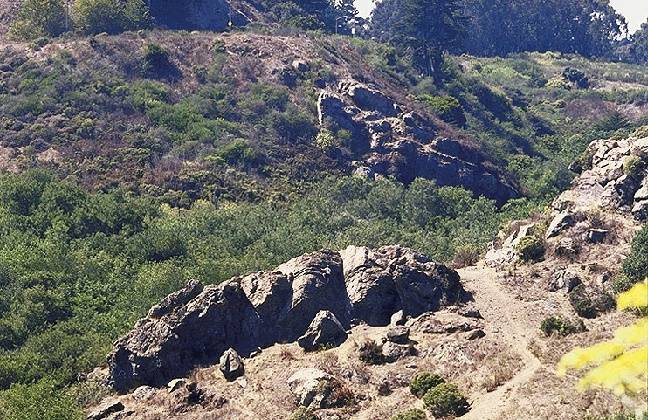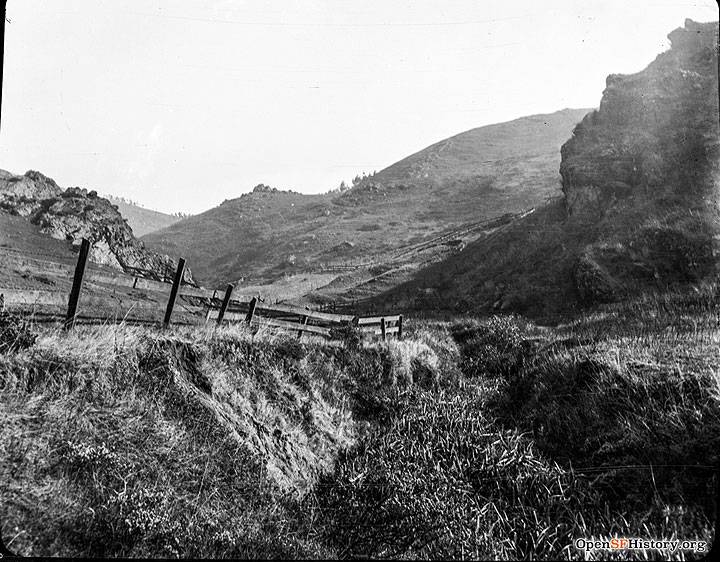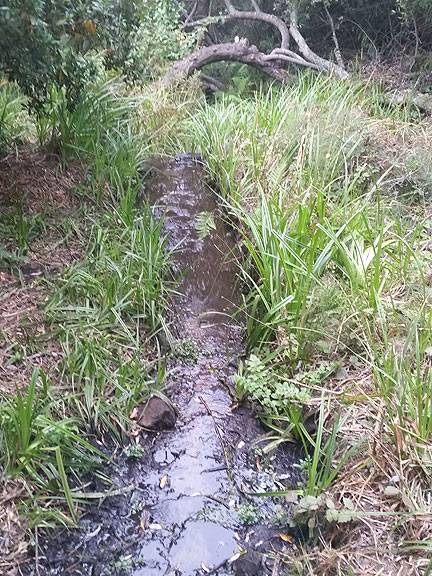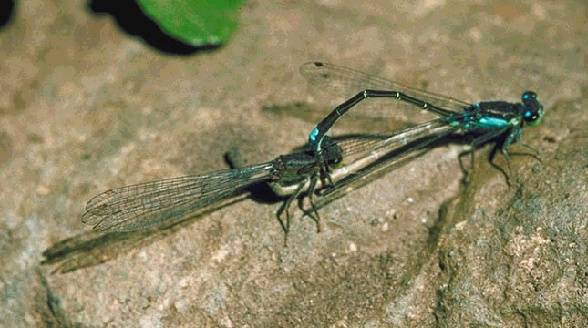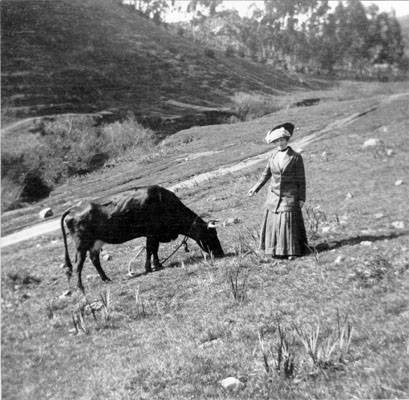Glen Canyon Natural History
Historical Essay
by Pete Holloran
A bike tour on Saturday, April 23, 2023, starting at Glen Park Greenway and visiting Glen Canyon's grasslands, its western edges along O'Shaughnessy Drive, the Native Plant garden at the Miraloma Park Improvement Association parking lot, the Twin Peaks slopes, and ending finally at Mt. Sutro Open Space. Led by the SF Department of the Environment's Peter Brastow and California Native Plant Society aficionado Bob Hall, this was an incredible journey through habitats and species, mostly plant, during the super bloom after our rainy winter. Lots of science and information!
Glen Canyon rocks
Photo: Chris Carlsson
Glen Canyon at turn of 20th century, before trees planting.
Photo: Western Neighborhoods Project/OpenSFHistory.org
Islais Creek near its source at the top of Glen Canyon, 2006.
Photo: Chris Carlsson
Islais Creek flowing in mid-canyon during late summer 2016 in a very dry period.
Photo: Chris Carlsson
Glen Canyon's varied topography and diverse habitats make it one of the most interesting natural areas left in San Francisco. The cliffs carved above bear witness to the active seismic activity in the ancient past. Along O'Shaughnessy Boulevard the dark-red outcrops of Franciscan radiolarian chert, deposited long ago in perfectly flat beds on an ocean floor, have been warped over time into folded chevrons. Bluff lettuce (Dudleya farinosa), stonecrop (Sedum spathulifolium) and other denizens of rocky outcrops grip the cliff face. A gnarled chinquapin (Chrysolepis chrysophylla), the only one in San Francisco, clutches a windswept rock. In a patch of brush high above the road, the common scarlet columbine (Aquilegia formosa) was just barely hanging on, down to just these couple of individuals in the entire county. With help from the park's volunteer stewards, it now flourishes along the north fork of Islais Creek in the canyon below. Before entering a culvert near the Recreation Center, Islais Creek runs unhindered through willow woodlands and planted eucalyptus trees. It thereby joins Lobos Creek as the only other above-ground creek in San Francisco.
The diverse habitats in the canyon make it particularly important for wildlife.
The San Francisco forktail damselfly (Ischnura gemina) is a rare species that nevertheless finds its habitat in the most unlikely places.
Photo: Margo Bors
In Glen Canyon, the San Francisco forktail damselfly is largely restricted to a drainage ditch on the northern slope. It has gone extinct at least once in the canyon, but graduate students from San Francisco State University reintroduced it from nearby populations on San Bruno Mountain.
The Friends of Glen Canyon Park is particularly active in providing stewardship to the canyons wildlands. Its members are occasionally seen in the canyon with spotting scopes trained on the red-tailed hawk nests in the eucalyptus trees above. They often know to the day when the years chicks fledged!
Elise Beneke Tietz with a cow in Glen Canyon, c. 1909.
Photo: San Francisco History Center, San Francisco Public Library

